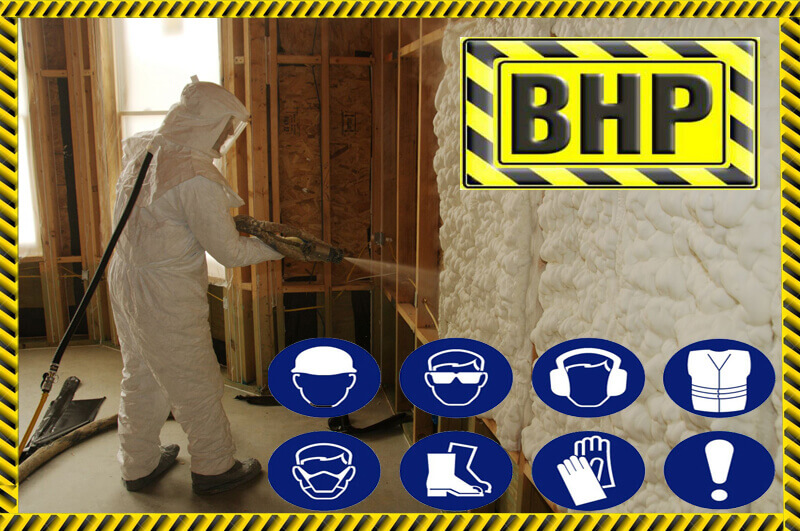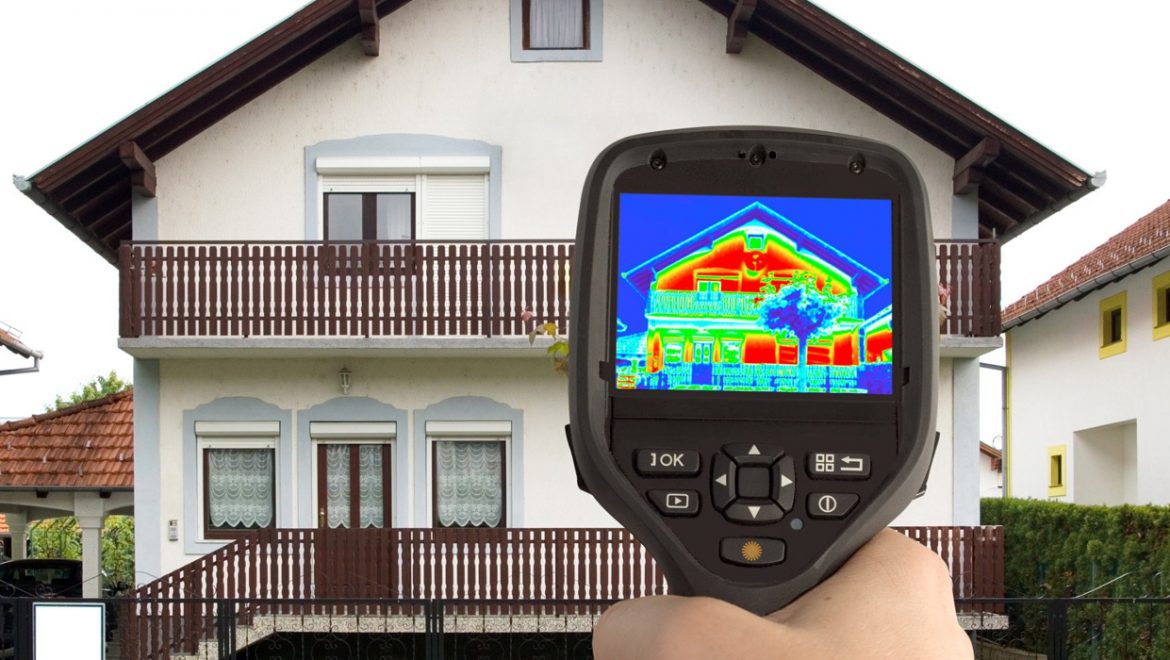WORK SAFETY REGULATIONS FOR POLYURETHANE FOAM SPRAY. WORKING WITH COMPONENTS OF POLYURETHANE FOAM
WORK SAFETY REGULATIONS FOR POLYURETHANE FOAM SPRAY SYSTEMS.
WORKING WITH COMPONENTS OF POLYURETHANE FOAM
OSH for operating polyurethane foam spray reactors.
OSH for Polyurethane Foam Spray.
Working with components of polyurethane foam.
Operating foam spray reactors and working with polyurethane components requires strict observation of the occupational safety and health regulations. Obeying below listed rules will save your and your coworkers health or life. OSH for operating polyurethane foam spray reactors must become priority for each person performing this work.
Principles of working with components of polyurethane foam spray.
Notice: Uncontrolled mixing of two components – ISO and POLY – can cause equipment damage, ravage of purchased spray materials and body injuries. To prevent accidental mixing of these two components you must always keep the wet parts separately and you must never mix POLY and ISO liquids.
Sensitivity of polyurethane foam components to moisture.
Isocyanates are catalysts used in bicomponent polyurethane foams. ISO reacts with moisture and that results in hard crystals formation which can cause machine damage. Initially, a thin layer of gel will purge on ISO and viscosity will increase. If this layer is not removed before spraying, it will reduce the machine’s efficiency and lifespan. The amount of gel and crystals produced depends on the amount of mixed ISO, temperature and humidity.
To protect ISO from moisture you must:
- Always use hermetic containers for storing the polyurethane components.
- Use only original containers for component storage. If you use wet container, ISO will crystallize very quickly. That will destroy the components and cause financial losses. Never storage ISO in the open container or when its opening is protected with foil.
- Keep the tank pump immersed in the liquid – it can be hydraulic oil or other industrial oil. Liquid will create a barrier between the ISO and the atmosphere in the open container. Cover sensitive areas with grease.
- Use special ISO hoses, resistant to humidity and chemicals.
- Do not use solvent for ISO after POLY cleaning and vice versa.
- After the use, cover the ISO pump parts with oil or grease.
Changing of the spraying materials:
- When you change the spray material, sluice the system several times to be sure it is completely clean.
- After sluicing always clean the meshes at the pump exit.
- Check if the material is compatible with the liquid sprayed previously.
- In most cases, ISO is marked with red and POLY with blue. Mark the hoses with the same colors or with signed descriptions. This will reduce the risk of confusion and mixing of the two components.
Hazards of Work with Polyurethane Foam Spray Reactors
There is a risk of an electric shock when operating the spray reactor. Incorrect grounding of the polyurethane spraying machine may damage the device and electrocute its operator. It is recommended that before each use, you test the power socket with the tester for three-phase sockets to detect any network connection malfunctions.
- Cut off the power supply with the main switch before each machine survey, and open the door to the inertial of the polyurethane foam spray reactor.
- Use only earthed power installation.
- All connections of the reactor to the power supply have to be made by qualified electrician with appropriate permissions.
Toxic fluids or vapors can cause serious injuries if they get to your body.
- Read specification of the spray liquid you use.
- Store health hazardous liquids in special containers, in the temperatures appropriate for the substance, away from any source of fire. Follow the manufacturer’s instructions for use conditions.
- Whenever you spray polyurethane, make sure the liquid components of polyurethane foam do not get into your body through the respiratory tract, digestive tract or damaged skin.
Personal Protective Equipment (PPE)
If you work with polyurethane foam spray devices you must use personal protective equipment each time you: perform the work, service the machine or stay in the area of spray. Observing the safety rules when spraying polyurethane foam will help you to avoid serious injuries, including eye injuries, poisoning, burns or hearing loss.
Obligatory PPE for the operator of the polyurethane foam spray reactor:
- Special glasses or goggles for eye protection
- Working suit for skin protection
- Gas mask for air track protection
- Gloves
- Hearing protection
Risk of skin damage for polyurethane foam spray.
High pressure of the polyurethane foam components at the exit of the gun, any hose leaks or damaged containers for component transport can harm your skin and lead to infection. Do not underestimate any injury.
- Close the inlet valves when you do not perform insulation spray.
- Do not point the spray gun to your body or to anybody else around you.
- Do not put your hand into the jet of the sprayed polyurethane.
- Do not stop the leak of polyurethane foam components with your hands or with any other parts of your body.
- Turn off the machine after you have finished operating it, surveying it or performing any maintenance actions.
- Repair all connections of the spray reactor before work if you have noticed any, even minor, leaks.
- Check the hoses and connectors of the spray reactor. Replace faulty or worn parts immediately.
Fire and explosion hazards.
Flammable fumes of paint and chemical materials can cause fire and explosion.
Preventing fire ignition and explosion:
- Work only in well ventilated areas, free from unprotected sources of fire.
- Eliminate all potential sources of fire.
- Remove all unnecessary and fire hazardous objects from the spray area.
- You mustn’t create sparks in the spray area.
- Ground all equipment in the polyurethane foam spray area.
- Always have functional fire extinguisher at the ready.
Foam expansion hazards.
The heating of components of polyurethane foam in limited spaces, such as hoses, can damage them. Maintaining increased pressure in the reactor can cause the equipment damages and injuries to the operator.
- Open the safety valve during the heating of the components. This can alleviate the foam expansion during this process.
- It is recommended to replace the hoses from time to time, depending on wear and work intensity.
Dangers of chemical reactions with aluminum.
Spraying with substances not intended for contact with aluminum parts can cause chemical reactions that will damage machinery parts – it applies to all polyurethane foam spray devices, including reactors.
- Do not use trichloroethane methylene chloride and other substances, such as halogenated hydrocarbons and solvents for the above substances.
- There could be many more substances that should be not used with aluminum. Contact the supplier before the use to verify the spray material.
Hazards of improper use of the equipment.
Improper use of the polyurethane foam spray reactor can cause injuries and death.
- Only trained operators can use this equipment.
- Do not leave the machine when it is live or pressurized.
- It is forbidden to operate this equipment under the influence of alcohol and/or narcotics.
- Do not exceed the maximum pressure or temperature of PU foam components. Read the technical data of the foam spraying equipment. Learn the technical specification of fluids that you intend to spray. If in doubt, contact your supplier of chemicals. Every operator should know the safety and hygiene rules of work with polyurethane foam spray reactors.
- Use only applicable substances for spraying.
- Check the condition of the equipment before every use. Replace damaged and worn parts using only original replacements, or replacements with the same catalog number as the original part.
- Do not modify the equipment.
- Use the equipment only for its intended purpose.
- Keep hoses and cables away from human passages, sharp edges, moving parts and hot surfaces.
- Do not bend or twist the hoses, do not pull them to move your reactor.
- Observe all the applicable safety regulations.
Hazards of movable components.
Movable components can cause minor or serious injuries, they can cut off your fingers or other patrs of your body.
- Keep an appropriate distance from the movable components.
- Do not work with machine if its movable components are not protected.
- The device connected to the compressed air line can spontaneously turn on without warning. Before servicing, replacement or transportation of the polyurethane foam spray reactor, the air must be drained from it. Remember to disconnect the machine from the power supply.
Burn hazards.
The machine elements can become hot during spray. To avoid burns, do not touch hot fluid or any hot parts. If you want to perform any repairs or maintenance, wait until the machine has cooled down.
Important information of the spraying materials.
- Safety rules of working with polyurethane foam spraying reactors also cover issues of working with foam components.
- While spraying or mixing of two polyurethane foam components, we create harmful particles and vapors.
- Read the substance descriptions in the manufacturer’s brochures to find out about all of the health hazards.
- Prevent the inhalation of particles and vapors by ventilating the room. If it’s not possible to vent the room, it is recommended to equip the employee with a mask supplying fresh air from the outside.
- To prevent contact with isocyanates, personal protective equipment (PPE) such as special gloves, shoes, suits and gas masks are required. Any person present in the spray area must wear a special mask to prevent the inhalation of gases formed during polyurethane foam spray.
Flammable materials.
Some flammable materials may have a low ignition temperature and therefore they may be fire hazardous. Please read the manufacturer’s information on the spray substance.





